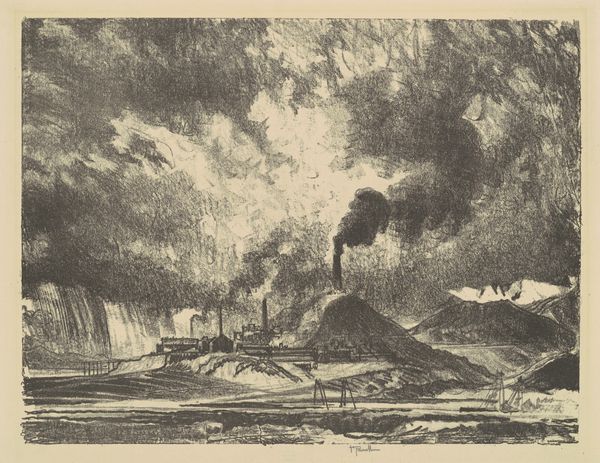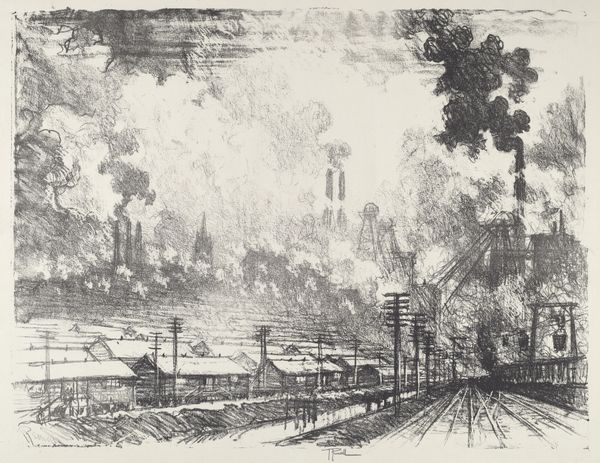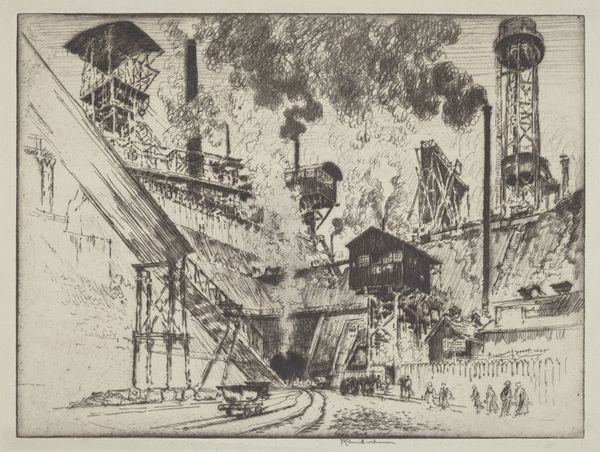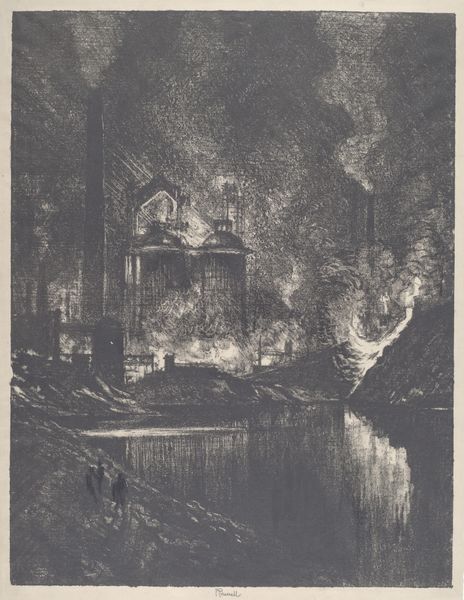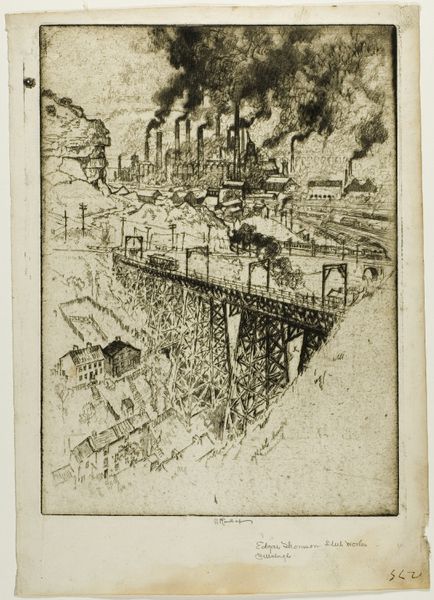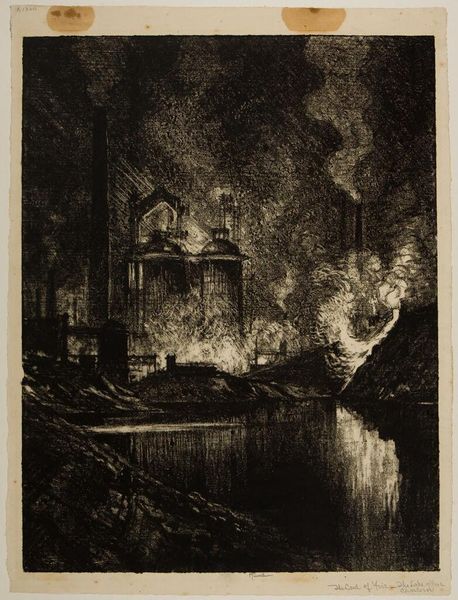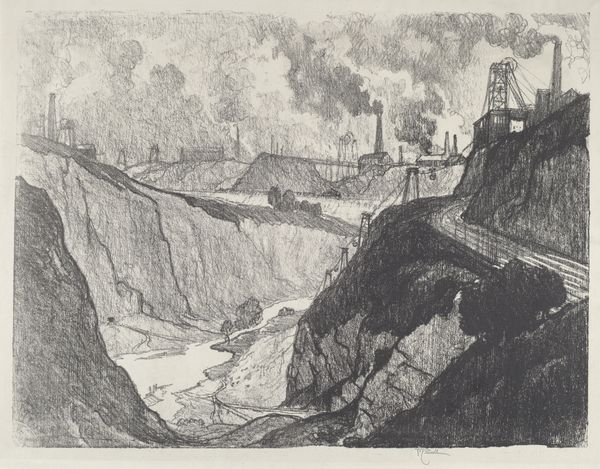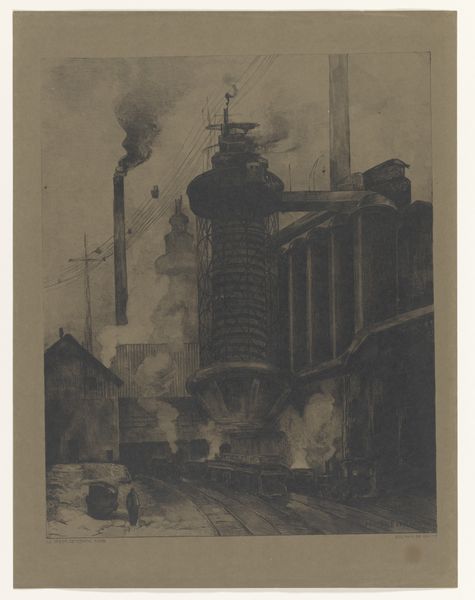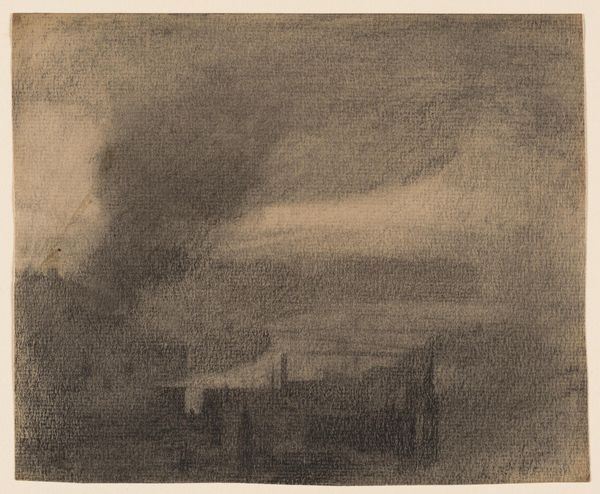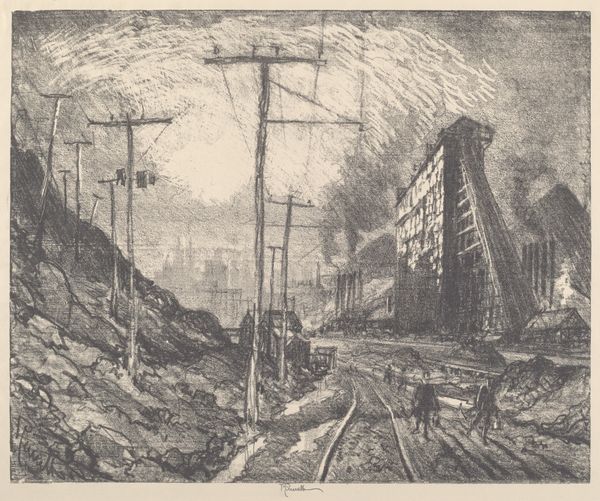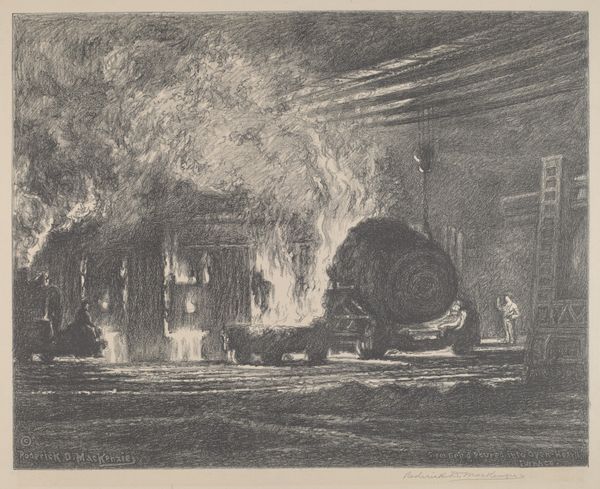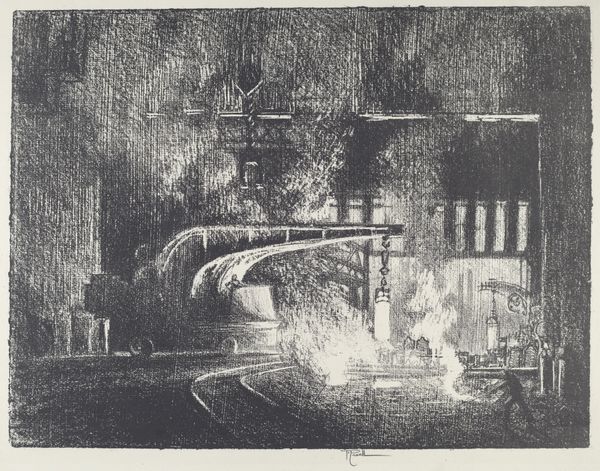
Copyright: National Gallery of Art: CC0 1.0
Editor: Here we have Joseph Pennell’s "Work Castles, Wolverhampton," an etching from 1912. It feels… monumental, in a very bleak way. What do you make of it? Curator: I see a carefully constructed image that engages directly with the anxieties and fascinations of early 20th-century industrial society. Wolverhampton was at the heart of the Black Country. Consider the title itself: "Work Castles." Is this meant ironically, perhaps, linking the romantic grandeur of castles with the grit and grime of industrial labor? Editor: That’s interesting. So it’s not just a straightforward depiction. But how would audiences at the time have perceived it? Curator: It’s highly likely that the imagery tapped into both pride and apprehension. There’s a romantic, even sublime quality in the swirling smoke and imposing structures, reflecting the power of industry. Yet, these "castles" are built on the backs of workers, contributing to pollution and social stratification. Where does Pennell stand, do you think? Is he celebrating progress, or critiquing its human cost? Editor: It’s hard to say! The composition seems to emphasize the scale and dominance of the factories. Maybe it's meant to provoke thought, not deliver a simple message? Curator: Exactly! Think about the etching medium itself, a process that allows for intricate detail, capturing both the immensity and the claustrophobia of the industrial landscape. The print could easily circulate, entering debates about urban planning, labor rights, and the aesthetics of modernity. What do you think that an artist today would make of it? Editor: Probably critique the impact of the factory, linking to debates about sustainability. I definitely learned new angles today. Thank you! Curator: And I learned to consider new contexts. The beauty of art!
Comments
No comments
Be the first to comment and join the conversation on the ultimate creative platform.
